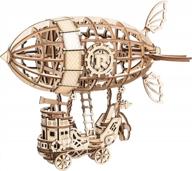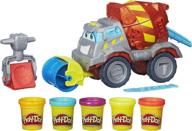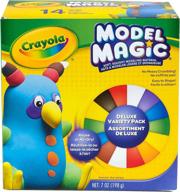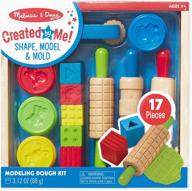How to Make Cute Clay Animals?
Making cute clay animals is a fun and creative way to spend time. With modeling clay or polymer clay and a few simple tools, you can sculpt an endless variety of animal creations.
Materials Needed
- Modeling clay or polymer clay in colors of your choice
- Clay sculpting tools like:
- Plastic or metal clay sculpting tools
- Toothpicks
- Rolling pin
- Cookie cutters or clay cutters
- Acrylic paints and brushes (optional)
Instructions
- If using polymer clay, condition it first by kneading and softening.
- Form a basic body shape for your animal. Make an oval for the body, teardrops for ears, spheres for eyes, etc.
- Add details like tails, wings, horns and textured patterns using clay tools.
- Attach parts by blending and smoothing clay together.
- Use toothpicks to add nostrils, smiles or other fine details.
- Bake polymer clay pieces according to package directions.
- Paint details on baked clay with acrylics (optional).
Let your imagination run wild and create cute cats, dogs, bunnies, elephants, and more! Adjust the shapes and sizes to make big or tiny animals. The options are endless when making clay creatures.
Similar products
How to Make Clay Jewelry?
Making your own polymer clay jewelry is an enjoyable DIY project that lets you create customized, fashionable accessories. With some basic tools and techniques, you can craft beautiful clay earrings, necklaces, bracelets and more.
Materials
- Polymer clay in colors of your choice
- Clay tools like:
- Rolling pin
- Clay blade
- Cutters
- Dotting tool
- Jewelry findings like clasps, pin backs, jump rings, headpins, eye pins
- Acrylic roller for flattening clay
- Pasta machine (optional but makes rolling clay easier)
Steps
- Condition the clay by kneading it until soft and pliable.
- Shape clay elements like beads, pendants or focal shapes using hands, cutters or a pasta machine.
- Use a roller or acrylic sheet to flatten clay into thin sheets or textured patterns.
- Cut out clay shapes using cutters or by hand with a blade.
- Use a dotting tool or toothpick to add patterns like dots, stripes or swirls.
- Bake pieces according to clay package directions.
- Once cooled, glue findings like pins, clasps or jump rings to assemble jewelry.
With some practice at rolling, cutting and shaping clay, you can create versatile jewelry like bead necklaces, domino earrings, patterned bracelets and more. The possibilities are endless for DIY clay accessories!
How to Store Leftover Clay?
When working with modeling clays like polymer or air-dry clay, you'll likely have some leftover clay. Properly storing the unused clay keeps it soft and reusable for future projects.
Storage Tips
- Knead the clay to soften it and form into a ball or log shape for storage.
- Wrap tightly in plastic wrap or place inside a resealable plastic bag.
- Squeeze out excess air before sealing to prevent drying out.
- Store clay in a cool, dry location away from direct heat or sunlight.
- Ideal storage temperatures are around 60-70°F.
- Avoid freezing clay as this can cause condensation issues.
Long-Term Storage
For polymer clay:
- Spray wrapped clay lightly with water to keep moist.
- Place clay in an airtight plastic container or bag.
- Polymer clay can be stored this way for 6-12 months.
For air-dry clay:
- Store any unopened packages according to packaging directions.
- Leftover clay will dry out quickly once opened.
- For best results, use opened clay within 1-2 weeks.
With proper storage methods, you can keep leftover clay soft and usable for months. Tightly wrap or bag clay, store in ideal conditions, and your clay will be ready for more crafting fun when needed!
How to Remove Clay from Fabric?
When working with modeling clay, it can easily end up stuck on your clothes, towels, and other fabrics. Removing clay while it's still moist is easiest, but dried clay can still be removed with some effort.
For Wet Clay
- Scrape off excess clay with a dull knife or spatula.
- Rinse the fabric under cold running water.
- Rub a bar of soap directly into the clay stain.
- Scrub with your fingers or a toothbrush.
- Rinse until soap and clay are removed.
- Launder as usual once clay is removed.
For Dried Clay
- Use a stiff brush to brush off any dried clay chunks.
- Soak fabric in warm water for 15-30 minutes to rehydrate the clay.
- Rub soap or laundry pre-treatment into the stain.
- Scrub vigorously with a toothbrush or laundry brush.
- Rinse thoroughly until water runs clear.
- Repeat soaking and scrubbing for tough stains.
- Wash fabric as usual once stain is gone.
Avoid using hot water or drying fabrics before removing clay. Heat can set clay stains. For delicate fabrics, test removal methods on a small hidden area first.
With some elbow grease and staining techniques, clay can be removed from fabric. Prompt attention while clay is still moist makes the process much easier.
How to Make Clay Not Stick to Hands?
When working with polymer or modeling clays, stickiness can slow you down. Luckily, there are some easy ways to prevent clay from clinging to your fingers and work surface.
Tips for Non-Sticky Clay Handling
- Apply a barrier cream or lotion to hands before starting. This creates a layer between skin and clay.
- Use cooking oil like vegetable, olive or coconut oil to lubricate hands and work area.
- Try rubbing hands with butter, shortening or wax paper.
- Lightly dust hands and work surface with cornstarch or baby powder.
- Work clay on a non-stick surface like acrylic, plastic or glass.
- Wet hands or dip them in water frequently while working to prevent sticking.
What Not To Do
- Avoid flour—it can leave grains in the clay.
- Skip lotions with glycerin which can keep clay moist.
- Don't use too much powder which can dry out the clay.
Applying a light coating of cooking oil, cream or cornstarch before starting is an easy solution. Keep extra powder or oil nearby while working to reapply as needed. A spray bottle of water can also help unclog hands.
With some preparation and these handy tips, you can clay comfortably without it clinging to fingers, allowing you to create with ease.














